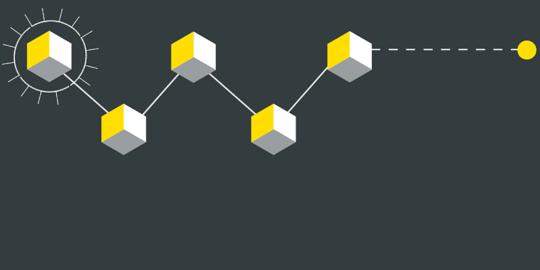With the amendment to The Danish Air Navigation Act, a chapter will be added concerning drones. According to the Act, it is no longer a requirement for the pilot to have a special permit to fly drones.
The bill is expected to be processed in the Danish Parliament during the spring 2016.
The current legislation
Currently, the conditions allowing individuals to fly drones are specified in Danish regulation (“BL 9-4 Regulations for Civil Aviation“).
According to this, the drone must not exceed a height of more than 100 meters and the distance from the drone to metropolitan areas and/or public roads must be at least 150 meters.
However, if the drone is used commercially, the demands are not quite as restrictive.
For commercial use, the drone is permitted to fly over metropolitan areas, if the area is fenced off. The flight height may on the other hand still not exceed 100 meters.
Furthermore, a number of restrictions are applicable when dealing with drones weighing more than 7 kilograms. If that is the case, the law requires a liability insurance and radio control panel.
The metropolitan areas are very broadly defined which de facto limits the air space for legal drone flight.
If a drone flight is in violation with the rules, the owner or user may be held liable to pay a fine.
The exact amount of the penalty is not yet decided but a fine of DKK 3,500 or more can be expected.
The new legislation
The new chapter of the Act will allow more drone flights. This is because that the current rules do not take the special nature of unmanned aerial flight drones into account.
In the remarks to the new chapter of the Act, it is obvious that the Danish Transport and Construction Agency themselves noticed that the old rules were non-applicable to drone flights since they were written when model flights were the only unmanned vehicle available to the public.
According to the proposed draft, the new rules will be visible from section 150 and 151a-151e. These sections will relate to commercial and private use of “small drones”.
The Act does not define small drones and the Danish Transport and Construction Agency must thus determine this from a risk-based approach.
In other words, this means that the Act deals with the use of drones weighing 25 kilograms or less.
Section 151a is intended to be a general rule applicable to all flights with small drones.
From this section, it appears that other people’s property must not be exposed to danger or other unnecessary inconvenience by the drone.
It is consistent throughout the proposed amendment that the security must not deteriorate by opening up for more lenient rules on drone flight.
This is particularly underlined by the restrictions on flight over natural resorts, military installations and airfields.
The proposed amendment includes provisions making flight over the above-mentioned areas illegal which is in line with the current case law.
Flights in and outside metropolitan areas
The new rules largely separate flight over metropolitan areas and outside these areas.
This e.g. means that a pilot can fly a drone outside metropolitan areas without taking any special requirements into account.
On the other hand, special requirements are necessary when flying over metropolitan areas because of the increased risk of damages and violations of privacy – all of which are threats that become increasingly important as identifying the pilot can be difficult.
As mentioned earlier, the proposed amendment will require that the pilot obtains a licence documenting his right to pilot drones commercially.
As a standard driver’s licence, the drone licence is personal and cannot be shared.
Furthermore, the licence can be revoked if the pilot has been flying under the influence of alcohol or if the pilot in another way is unable to fly the drone without entailing an increased risk to the surrounding environment.
On top of that, a minimum age limit of 18 years has been proposed alongside taking out liability insurance.
Consequences
The proposed amendment only sets out a legal frame for drone flight. As a consequence the Danish Transport and Construction Agency is given a large portion of freedom when deciding the legal status.
However, from the amendment it appears that drones used commercially to a greater extent will be allowed to fly over metropolitan areas and without special permissions to fly outside of these areas.
The new rules will ease the administrative burden connected with drone flight because the dispensations are linked to specific pilots and drone types. This is expected to result in an overall cost reduction and a more flexible use of drones in general.
The Danish Transport and Construction Agency is given special authority to determine the rules on drones carrying cameras. Furthermore, the new rules aim to secure the right to privacy by labelling commercially used drones.
It is worth noticing that drones under the triviality limit, which is roughly 250 grams, is not expected to be subject to special restrictions and that private individuals to a further extend therefore will be able to use these drones.




